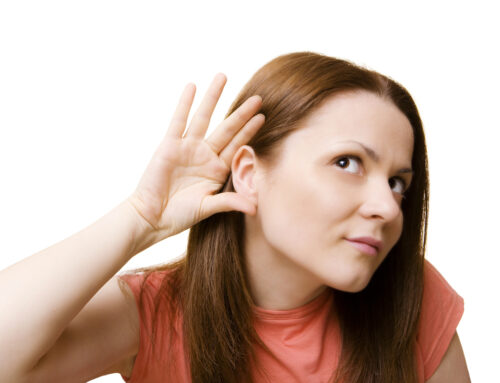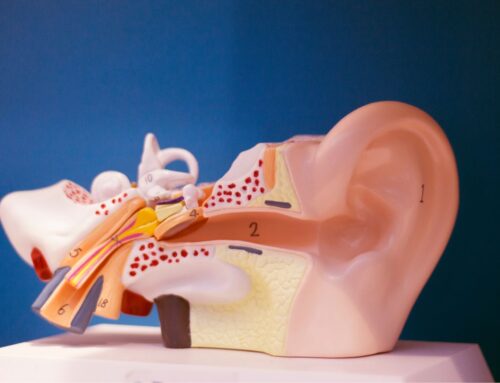
Link Between Balance and Hearing
In addition to hearing taking place in the ears, did you know what balance does too? Both sensory systems for processing sound as well as maintaining balance are in the inner ear.
How does hearing work?
The auditory system is the sensory system for hearing. It involves the ears and brain which work together to absorb, process, and understand speech as well as sound. The auditory system consists of:
- Outer ear: the outer ear absorbs soundwaves from the environment which travel through the ear canal and land on the eardrum.
- Middle ear: the ossicles – three small connected bones – help push sound waves further into the inner ear.
- Inner ear: the cochlea is filled with thousands of sensory cells and fluid that help convert incoming sound waves into electrical signals.
These signals get sent to the brain via the vestibulocochlear nerve where they are further processed. The brain assigns meaning to these signals, allowing us to hear and understand what we hear.
What is the balance system?
The vestibular system is the sensory system that manages balance. This system sends the brain information about spatial orientation, head position, and motion. It also maintains motor functions that enable us to keep our balance, maintain posture, as well as stabilize our head during movements. The main component of the vestibular system is the vestibular labyrinth in the inner ear. It consists of semicircular canals, otolith organs, and the vestibulocochlear nerve. The semicircular canals are made of three loops or tubes that each detect a specific motion:
- First canal: nodding up and down motions
- Second canal: side-to-side movements
- Third canal: tilting left and right movements
These canals are also filled with fluid known as endolymph and hair cells which serve as the sensory receptors of the vestibular system. All of these vestibular components work together to send the brain information about movement and spatial orientation through the vestibulocochlear nerve. This includes information about position in relation to gravity, head movement, posture, etc. There are ways that the vestibular system becomes impacted, disrupting this process and producing issues with balance.
What is the link between balance and hearing?
Both balance and hearing happen in the inner ear. So balance issues can impact hearing and hearing challenges can impact balance. Both balance disorders and hearing loss disproportionately impact older adults.
- Adults ages 65-74:
-
-
- Balance disorders: 20%
- Hearing loss: 1 in 3 (33%)
-
- Adults ages 75 and older:
-
- Balance disorders: 25%
- Hearing loss: 1 in 2 (50%)
Balance disorders can be caused by different factors including inner ear disorders and viral infections. Because both balance and hearing systems use the same nerve pathway to the brain, communicating signals for both systems can be impacted. So these conditions can be experienced separately (without impacting each other) or they can overlap depending on underlying causes.
What are treatment options for balance or hearing issues?
Fortunately, there are useful ways that balance issues and hearing loss are managed. Treatment options can include the following:
- Balance Disorders: treatment for balance disorders depends on the underlying cause. Treatment options include:
- Medications: medications can be prescribed to clear infections (antibiotics) or to alleviate symptoms associated with inner ear disorders like dizziness and nausea.
- Vestibular Rehabilitation Therapy (VRT): this specialized type of therapy includes practicing exercises that work on gaze stabilization, balance training, and habituation of certain movements without triggering dizziness or vertigo.
-
-
- Canalith repositioning: this treatment is used to address BPPV and involves performing head movements to reposition dislodged crystals in the inner ear.
-
- Hearing Loss: hearing loss treatment starts with having your hearing health assessed. Hearing tests involve a painless and non-invasive process that measures hearing capacities in both ears. This process identifies any hearing loss, the type, and the degree of impairment you are experiencing. Hearing aids are the most common way hearing loss is treated. These are innovative devices designed to abroad and process speech and sound. This provides the ears and brain with significant support, making it easier to hear. Hearing aids alleviate symptoms and maximize hearing capacity which increases spatial awareness and safety.






Leave A Comment